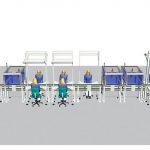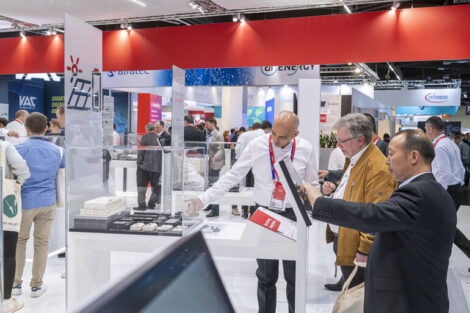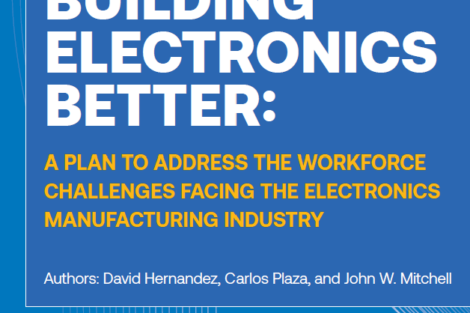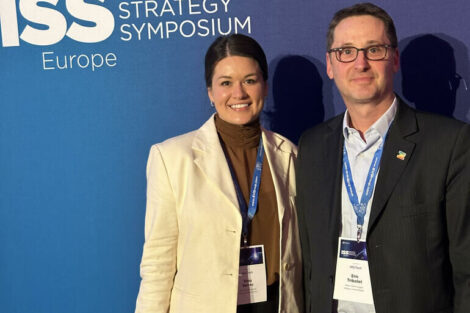Can automation really make final assembly affordable in Europe? Markku Jokela, founder and CEO of Photonium Oy, a new Finnish company with a long history, says yes and explains why. Entrepreneur Jokela is here to tell us more about his company and how he plans to revolutionise global electronics manufacture.
Photonium may be new to electronics, but what about Markku Jokela?
I have been in electronics manufacture for 18 years – longer than most, so know the market, its issues and its trends very well indeed. As an entrepreneur and as a mechanical engineer, I have a passion for automation, which led me to found PMJ Automec in 1989 as a supplier of end-of-line assembly automation solutions. We got a lot of things right – in ten years, our revenues grew from 1 to 64 million euro and our team expanded from 28 to 500 people. By 1999 we were a global company, leading the end-of-line automation market with a 60 % market share in odd-form component placement.
To what would you attribute PMJ’s success?
The market and our customer base were good; personally I had very good contacts with the main clients and I had an excellent team. Our HiSac units were probably the best manufacturing cells ever made, we got the marketing right, we worked hard and we were also lucky. PMJ became a strong brand, and we were well known in the electronics market. By 1997, the company had become so big that I floated it on the Helsinki stock exchange, keeping shares in the company. Then in 2000 at the age of 43, I hired a professional CEO and retired from the company.
That was seven years ago. What have you done since then?
I love developing leading edge technology, so with the money I made with the PMJ float I invested in Finnish high-tech start-ups and later founded Photonium as a supplier of highly innovative automation equipment for optical fibre manufacture. We are currently no. 2 in the industry and aim to become no.1.
So from electronics to optics and back to electronics
I really wanted to get back to end-of-line automation. There are a lot of similarities between the businesses: They are high-tech, global and aim for leadership positions. Then, of course, whether you are designing and developing a plant for optical fibre manufacture or designing end-of-line automation for assembly, the principles are the same – indeed, our 28-strong project automation team, with 30 years of experience and know-how in the automation of end-of-line electronics manufacture, is equally at home in designing lines for optical fibre manufacture.
End-of-line automation is hardly a new idea
Very true – automation has been around since the good old days when people could invest a lot in final assembly lines without worrying too much about the costs. Now though, electronics automation must be easily affordable with excellent payback. That’s because automation is not an engineering decision: It should instead improve the economics of a business. With our Conveyor Top Concept (CTC) we achieve that easily – wherever operators are doing monotonous pick and place work on two- or three-shift assembly lines, this is the cheapest alternative available. It is so economical that it enables European manufacturers to compete with Chinese and Hungarian labour, which we view as our principal competition rather than other automation solutions.
How have you managed to reduce the costs?
Through simple and modular design. Whereas more expensive automation equipment typically uses around 1000 parts, we have managed to reduce this number in our robotic cells to just 10. This was so important to me that I personally took charge of the project, working closely with the engineering team to achieve optimum simplicity. Extending this philosophy to the way in which our cells function, they are physically independent of the assembly line; their working heads being suspended over the conveyor rather than being an integral part of it. This allows them to be slotted into and out of the line without disrupting production.
Does simplicity also mean less functionality?
Absolutely not. The CTC cells are extremely versatile and, thanks to clever engineering, are capable of all of the sophistication and flexibility of much more expensive cells. This is also thanks to our partnership with the French company Cerebellum, who has developed control technology that integrates everything into a single, affordable plug-and-play module with integrated vision. This, together with our Otacco management software, gives our solution a flexibility that was previously prohibitively expensive.
Why is flexibility so important?
Product lifecycles are decreasing while product variations are increasing, so products are customised, effectively reducing batch sizes dramatically. That calls for real flexibility if throughputs are to remain high. Otacco interfaces with our customers’ ERP and BPR systems, while our vision-aided pattern recognition capability allows different components to be automatically identified and placed correctly even if they are fed into a cell at random. This allows our customers to manage batch sizes of one, automatically and on the fly – one product, different from the last, every two seconds. Admittedly this capability has been around for a while, but now, finally, it is affordable.
Who would use your system?
CTC will appeal to low and high volume manufacturers of smaller hand-held, high mix products. We aim to help European customers to keep their manufacturing in Europe – we already see pressure to move away even from Hungary. Our automation is so affordable that customers do not need to make that move.
Even if it is affordable, your system still requires capital investment that must be justified.
Right. Some of our clients work with their customers on 12 month contracts and have little visibility beyond that. As equipment depreciates in 3 years, they cannot justify the capital expenditure even though they could really use automation. We have therefore launched a new rental option whereby the client can rent the cells and the system from us for as long as required, extending the rental period as necessary. Rental is nothing new – companies rent their cars, photocopiers and computers – now they can rent affordable assembly. This, together with our technology makes CTC the fastest, most versatile, low cost alternative for end-of-line assembly available today.
EPP Europe 408
Staying competitive

In a few short years, the global electronics industry has changed beyond recognition, thanks to the wholesale migration of electronics manufacturing to low labour cost areas such as Eastern Europe, China and Mexico. Many of Western Europe’s former giants have either closed, or have moved their manufacturing activity, only to find that the search for cheaper labour is an ongoing task that condemns them to move every few years. So they must continually look for new sites, build new factories, recruit and train new workers, relocate management, set up and lock into new infrastructure and put into place the myriad variables that will allow them to operate efficiently – all while ensuring the seamless transition of the business and continuous service to their customers. Ironically enough, the search for cheaper labour can therefore be very expensive, heavy on management resources, and risky – and it takes manufacturing away from where it functions best – within its markets and close to product development activities.
A new name for the electronics industry, Finnish company Photonium Oy eliminates these issues with a technologically, economically and strategically clever solution that enables electronics manufacturers to stay competitive without having to relocate to lower labour cost areas.
Photonium is a leading equipment and process supplier for the photonics and electronics industry. Headquartered in Finland, the company specializes in developing new technologies for specialty fiber manufacturing and industrial production of optical fibers. The company also delivers custom-built automation solutions for the mass-customized assembly of electronic products.
Share:











